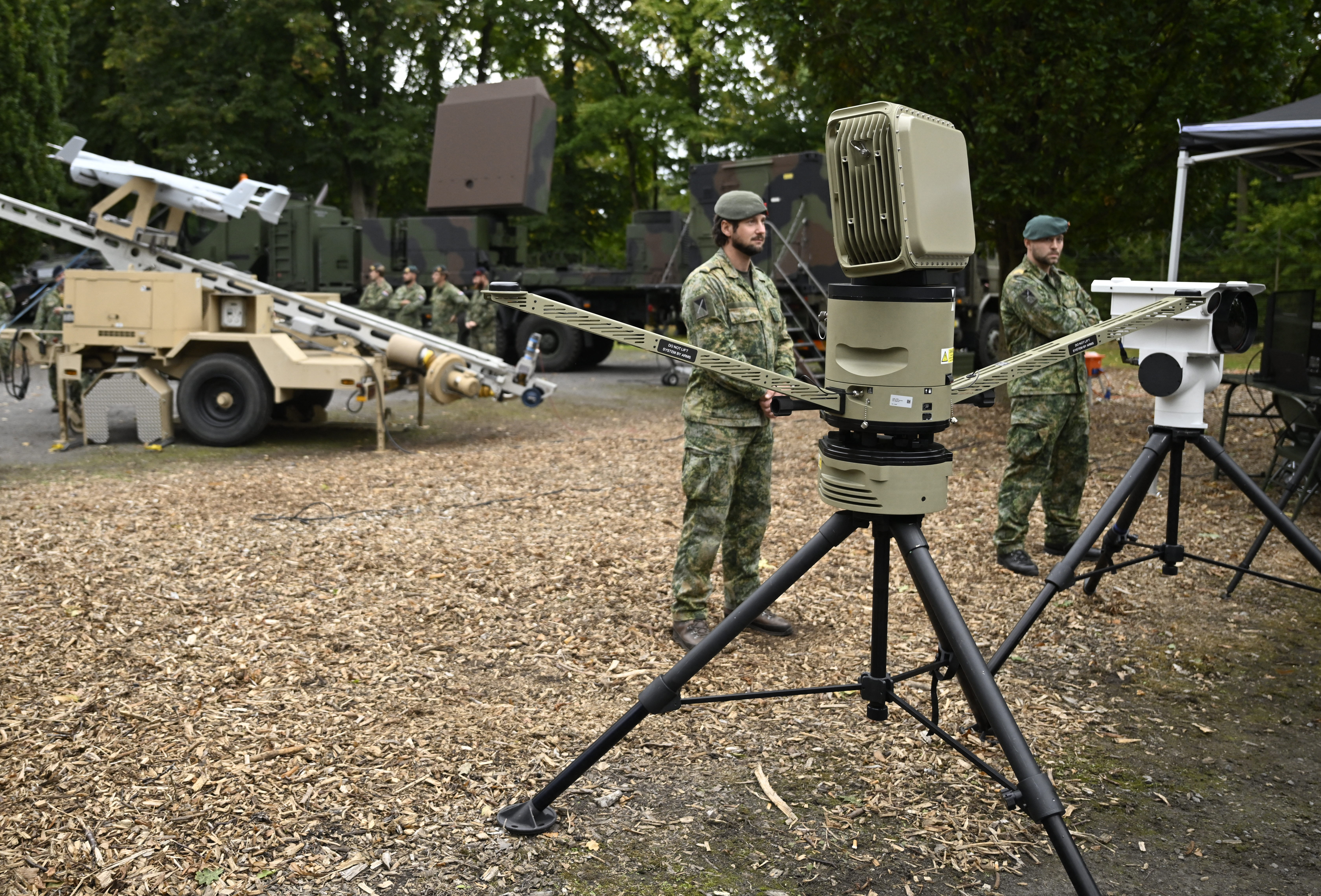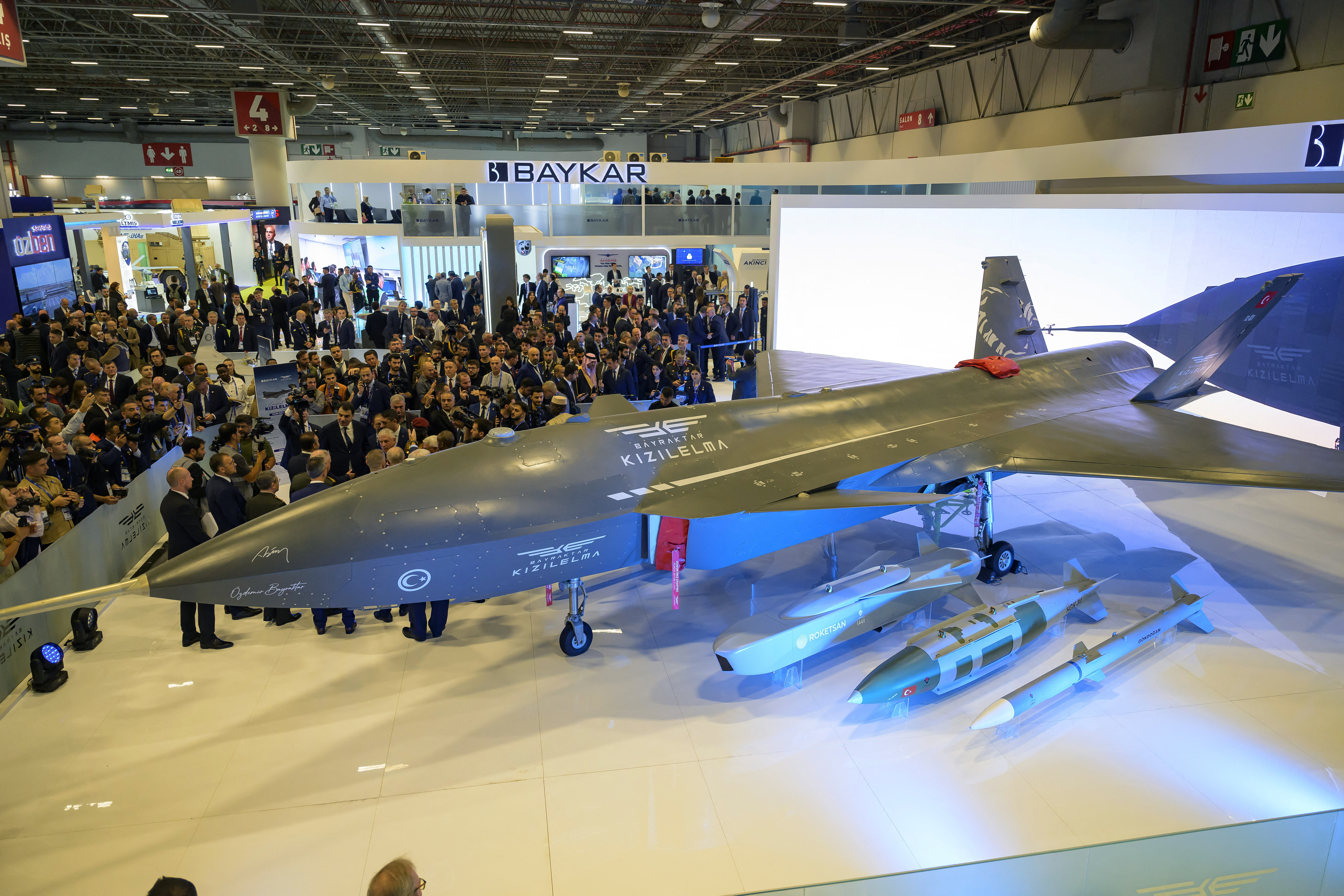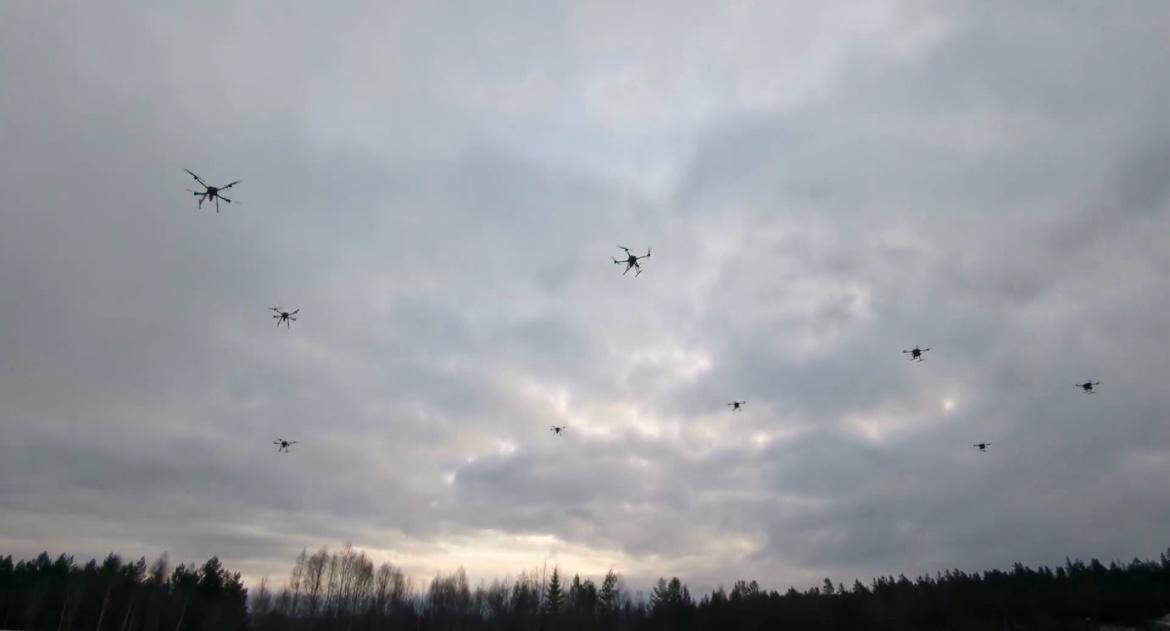
A work pause on the Sentinel intercontinental ballistic missile program is over, and Northrop Grumman has moved into negotiations with the Air Force about accelerating B-21 bomber production, company officials said July 22.
The restart of Sentinel work coincides with the Air Force and Northrop agreeing to a new program baseline following a major cost and schedule breach in early 2024 that triggered a Pentagon review and directions to restructure the program.
“We made significant progress on the program restructuring in the second quarter. In close partnership with the Air Force, we reached agreement on a restructure approach which will lead to re-establishment of the program baseline,” said Northrop CEO Kathy Warden, speaking on the company’s quarterly earnings call.
In February, the Air Force ordered a pause on the design and construction of launch facilities for Sentinel. Those facilities were at the heart of the cost and schedule breach due to new estimates about how much it would cost to perform the civil engineering of building or rehabilitating Minuteman III launch silos.
With the new baseline, Northrop has been “restarted” on the command and launch segment and made “really good progress in the second quarter,” Warden said. Work on the missile element, which was not paused, is also proceeding on schedule, she added.
The company and the Air Force have discussed “alternatives and options to accelerate” the program, Warden said, and Northrop now moving to “evaluate and implement those changes and get specificity around the program plan forward” which has “helped us to be able to move more quickly and remove barriers to performance.”
She said that overall, the Sentinel program has been “transformed” over the last two quarters and is now stable.
“That has improved our outlook for the program meeting its milestones, and we’re just really encouraged with how it’s progressing,” she said.
Missile design and command and control elements are also proceeding, Warden said.
“All three segments of the program need to move forward, and that’s what is most exciting about what happened in the second quarter, we actually made progress, such that the work was turned back on for the launch facilities,” she said. “And so we are back into designing those and really nailing down with the Air Force the appropriate requirements that will lead us to be able to move faster and potentially reduce costs on the program from the baseline.”
The goal, she added, is to mature the command and launch segment so that it is on pace with the other two elements of the program.
“We expect Sentinel revenue momentum to continue and for the program to be a meaningful contributor to our growth in the second half of the year,” Warden said. “We are confident in our ability to execute all phases of the program and deliver this critical capability for our nation.”
B-21
The reconciliation package recently passed by Congress had $4.5 billion for “acceleration” of the B-21 program, and the Air Force and Northrop have wasted no time in entering “discussions about how those funds will be used to make that happen,” Warden said. She did not characterize how much production might be increased, or whether the Air Force might buy increased numbers of the B-21.
Northrop is “looking to get a fair and equitable business arrangement where we would be incentivized to invest in that production capacity,” Warden said, “and with that would come the opportunity to earn improved returns on both the remaining lots of [Low-Rate Initial Production],” she said.
She noted that there is contract flexibility “to adjust based on inflation and other factors.” All of these factors are part of the negotiations now underway, she said.
Warden predicted the company may be able to share “more clarity” on B-21 contracting in the coming months and noted that Northrop has previously taken a $477 million charge on the B-21 program to accommodate “process changes” that could enable an acceleration.
“Depending on the final agreement for the production rate ramp on B-21, we do now believe it could exceed … 10 percent of our total revenue in the future, but it’s really early to provide any more definitive outlook,” Warden said.
“It is our expectation that, in the long run, these investments result in both better profitability and cash flow,” she said. “I don’t see [Sentinel] reaching that 10 percent [level] of revenue in the next couple of years, despite the additional funding that we’ve received, but certainly, as we move into the production phase of the program, which is now still several years out, I would expect at that time, we might revisit whether it becomes a larger part of the portfolio.”
Warden also said that Northrop has made investments in solid rocket motor production to satisfy growing contracts—both in munitions and launch vehicles—and will increase SRM production from about 13,000 units in 2024 to 25,000 units in 2025. She also said that while the company believes it will remain a strong player in high-end systems, it’s not Northrop’s intention to get into the low-cost, “attritable” cruise missile/munitions market.
The post Northrop Fully Back to Work on Sentinel, Negotiating Faster B-21 Production appeared first on Air & Space Forces Magazine.

Air, ICBM Modernization and Sustainment, B-21 production, Kathy Warden, Northrop Grumman, Sentinel, Sentinel ICBM
Air & Space Forces Magazine
[crypto-donation-box type=”tabular” show-coin=”all”]






